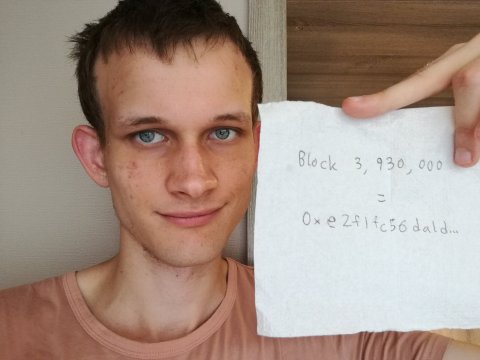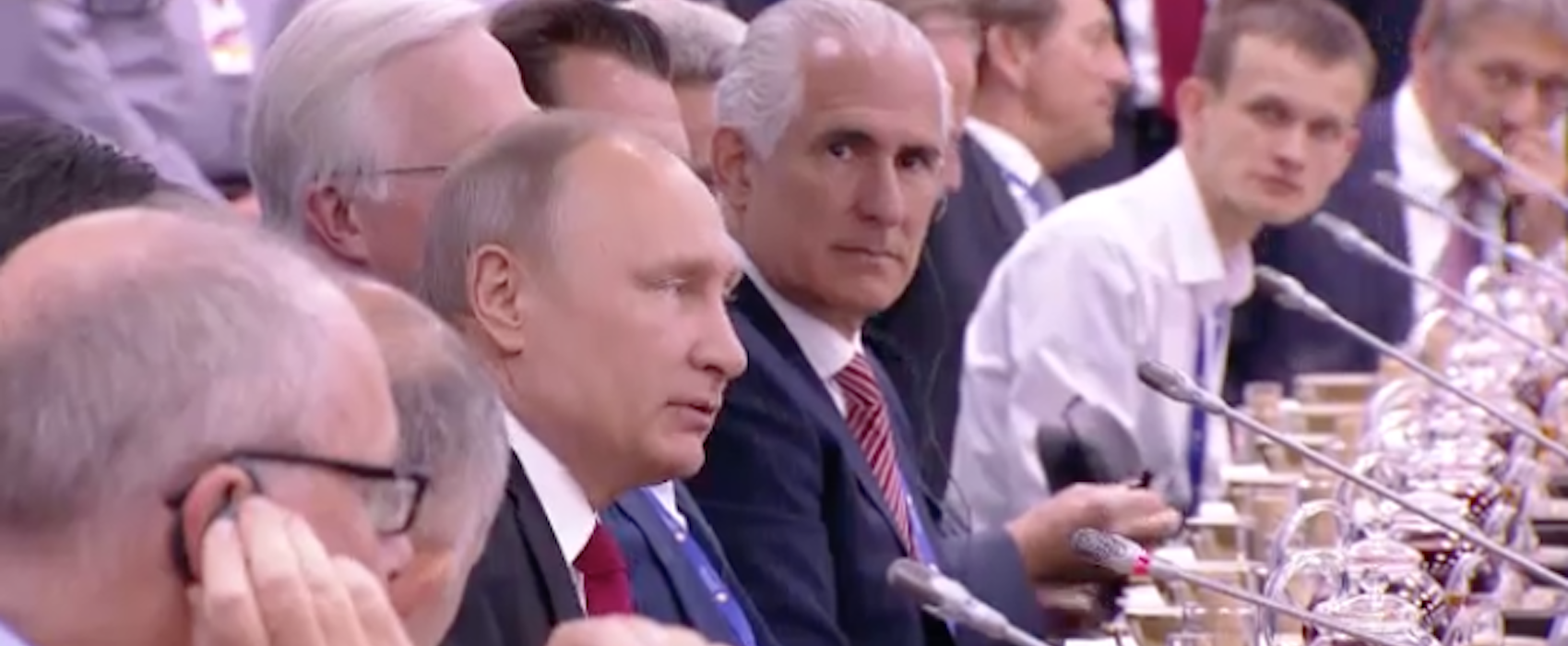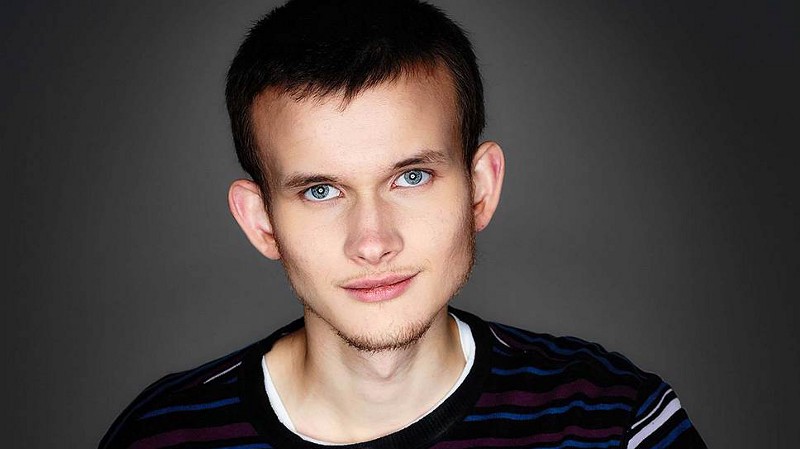Bill Gates, Steve Jobs, Elon Musk, and Vitalik Buterin?
Buterin sure is heading for a place amongst these entrepreneurial icons. It isn’t out of the question that one day Ethereum, Buterin’s blockchain, will have a similar valuation to that of Microsoft, Apple or Tesla. He, like the rest of these modern day legends, saw an opportunity to simplify technology and turn a highly complex issue into something that could be used by many.
Born in Russia and raised by a computer scientist and a business analyst, Buterin’s upbringing contributed to his interest for computer languages, math and economics. At age 6, he and his parents moved to Canada, and from an early age his outstanding intelligence was recognized. He was educated with a focus on stimulating his brain, although Vitalik Buterin acknowledges that he was already motivated by his hunger for knowledge.The thrill of learning and acquiring new knowledge excited him more than anything.
Buterin’s Introduction to Blockchain
Buterin was introduced to cryptocurrency by his father, who saw an opportunity in investing in Bitcoin. The first time he heard about it, Bitcoin didn’t get him overly excited. However, when he heard about it a second time, Bitcoin had his curiosity. He decided to earn some Bitcoin by writing blog articles about it.
This blog was soon shut down due to an absence of interest, but the quality of Buterin’s writing was duly noted by one of his readers. This reader was Mihai Alisie and he started Bitcoin Magazine. He asked Buterin to take on a co-founder position and keep on writing articles for the magazine. Bitcoin Magazine is now regarded as one of the first serious informational platforms about Bitcoin and blockchain technology.
Because of the research he conducted for his writing, Buterin started to develop a deep understanding of what was actually going on with Bitcoin and its underlying blockchain technology. He came across several projects that were using the logic of Bitcoin and its blockchain, but they were trying to change the meaning of a Bitcoin.
Bitcoin’s sole purpose was to be a currency, a completely new way to transfer value online. However, programmers that were using Bitcoin and understood the technology behind it saw that this technology could be used for a lot more than just the transfer of value. This made Buterin realize that an alternate blockchain, which made a large variety of these imagined use cases possible, would be extremely useful. Such a technology did not exist yet and he decided to build it himself.
Buterin Creates Ethereum
At age 19, Buterin started developing his new project. He understood the disruption it could bring on a minor scale but he never anticipated how many ways it could disrupt the world’s use of technology.
He introduced his idea to the world with his white paper in 2013, in which he proposed the Ethereum blockchain. His white paper was scrutinized by the Thiel Fellowship which saw the potential of Buterin’s innovation. He was given a grant of $100,000, access to the Fellowship’s resources and guidance, and he started working on Ethereum full-time.
Dr. Gavin Wood and Joseph Lubin joined the team and became the co-founders of Ethereum, followed by a group of talented developers. Buterin’s vision was to create a blockchain on which all kinds of blockchain applications could be built. These new applications could easily make use of the efficiency and decentralised nature of blockchain technology by building them on the Ethereum chain — without having to create their own blockchain.
The Ethereum team started to create their own programming language, Solidity, with which these novel blockchain applications could be built. Buterin admitted that during this period he truly started to understand the infinite amount of problems that could be solved with the Ethereum blockchain.
Essentially, all the applications built on the Ethereum blockchain make use of smart contracts. Smart contracts is a programming protocol, or software, that can execute arrangements and informational transactions autonomously, without the need of human interference.
Ethereum was first sold during the summer of 2014. It remained under the radar until March 2017 when Ethereum introduced itself via mainstream media and announced alliances with multiple multinationals. Prices skyrocketed from $15 per Ethereum to its peak price of about $390. This made Ethereum the second biggest cryptocurrency. Ethereum and its inventor Vitalik Buterin became established names in the blockchain industry and are currently two important pillars in the market.
The Face of Blockchain
With Satoshi Nakamoto, the inventor of Bitcoin and blockchain, remaining anonymous, the blockchain world has turned to Vitalik Buterin, ascribing him a leading role in the development of blockchain technology.
Thus far, he has already built quite a legacy. There’s an enormous certainty and strength in his speeches and answers. He also displays a profound understanding of the simple and complex problems and dynamics within the tech and crypto space.
Between this and the success of Ethereum, the loyal following and impeccable credibility he has acquired over the last 4 years is understandable. To illustrate how big his persona is, a hoax in June 2017 about his alleged death caused $4 billion to instantly leave the crypto market. He resolved this misconception in a blockchain way.

That the insights and knowledge of Vitalik Buterin are highly valued is confirmed by the high-ranking policymakers and institutions that have sought him out.
Buterin was an early endorser of OmiseGo, currently the largest Ethreum Application, and this led to a meeting with the Thai central bank. In this meeting, the future of the Thai economy and the role of technology was discussed. Buterin was approached to shed light on these complicated matters and to discuss the potential role Ethereum could fulfil in this.
A similar meeting happened in Russia. Buterin was invited to the St. Petersburg International Economic Forum, where he met President Putin to discuss the use cases of Ethereum and blockchain technology for the Russian economy, and technological infrastructure.

Fighting the Blockchain Hype
The blockchain and crypto hype is real and the value of the market is steadily climbing. Instead of embracing the hype, Vitalik is doing exactly the opposite and acknowledges every single flaw in the blockchain industry and in his own Ethereum.
He has publicly stated that there are numerous bubbles in the crypto space and that the speculation and expectations surrounding blockchain technology are far ahead of reality. He has addressed several major issues with the current status of blockchain technology, most importantly the scalability issues of the largest blockchain applications.
Currently, ICOs are under heavy fire and most of them have been on the the Ethereum blockchain. You’d suppose that its inventor would speak out in favor of ICOs, but not Vitalik Buterin.
Even though the bans caused a plunge in the price of Ethereum, he did the opposite of what was expected and spoke out against most ICOs, emphasising the opportunistic and scammy nature of most of them. He stated that moving forward, a thorough screening process for ICOs would certainly be good since bad ICOs hurt Ethereum’s reputation and network. Just recently, Vitalik proposed an ICO process for the betterment of the blockchain industry
Moreover, his answer to the question whether cryptocurrencies will take over fiat currencies underlines his realistic and informed approach to the blockchain evolution.
A large group of blockchain and crypto enthusiasts follow Buterin’s every move, and for good reason. He has proven himself to be a highly skilled programmer, blockchain ambassador, and an insightful and informed individual. He just might become a household name and an entrepreneur that the next generation of business students aspire to.

